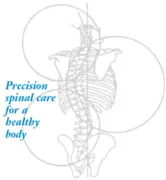The ATLAS ORTHOGONAL Procedure is a Gentle and Precise Correction
A PRECISELY DELIVERED, gentle and controlled contact on the first vertebrae in the neck (ATLAS) is designed to restore balance to the spine. Even though the primary focus of the adjustment is in the neck, the effects of this important correction influences the whole spine and all body systems. This is because the atlas orthogonal procedure influences one of the highest control centers over body balance, the brain stem and central nervous system. The C-1 vertebrae, also known as the Atlas, is a small donut-like bone located at the top of the spine and the base of the skull that surrounds the brain stem. When the spine is subjected to stress it can become misaligned. This phenomenon is known as the Atlas Subluxation Complex Syndrome (ASC) or the ASC Syndrome.
The importance of spinal balance
The nerves protected by our spinal column are very sensitive to pressure and stress. Due to the close proximity of the spine to the central and peripheral nervous system, as the spine becomes sufficiently misaligned, the result is mechanical stress which, either suddenly or over time, may traction or irritates nerves, compromising normal impulse transmission, and leading to a variety of unhealthy symptoms including pain, muscle spasm, absent or altered function throughout the body.
Nerves are responsible for four primary functions:
*
Control and regulation of all vital functions including circulation, breathing and digestion.
*
Activation of muscles that permit movement.
*
Allow us to sense, perceive and feel.
*
Relate us to the world outside ourselves including learning, experiencing and behavior.
Examining your structure and nerve system
The process begins by reviewing your detailed health history including any past traumas, motor vehicle accidents, surgeries, other treatment programs and other diagnostic tests including other x-rays, MRI's, etc. Your chief complaints, including location, onset, and duration must all be evaluated and assessed. We are interested in your health goals and how they pertain to you being able to live the life you love. After concluding this initial process, Dr. Dolan will begin the steps necessary to determine if you are a candidate for the atlas orthogonal/advanced orthogonal procedures.
Understanding your unique mis-alignment
As part of the initial evaluation, Dr. Dolan will focus attention on the relationship of the head to the neck. The top bone of the neck, known as the atlas vertebra, must be in line with the head, as well as the vertebrae below in order to minimize mechanical stress in this region which can result in neurological interference. Spinal injury or damage which misalign these structures results in:
Postural imbalance.
Pelvic distortion.
Leg length disparity also known as the "short leg" phenomenon.
As you lie on your back, measurement of the relative leg length will be made. Additional evaluation of posture will include sitting, standing and lying measurements including shoulder height, pelvic distortion, orientation to the vertical axis and displacement of the head and neck relative to the rib cage. Static and motion palpation, as well as ranges of motion are also measured. Additionally, neurological and orthopedic tests will be performed to evaluate joint and nerve function and understand possible pending health problems that with the right care may be avoided. If spinal misalignments are indicated by history and examination, a unique series of x-rays are taken to evaluate and mathematically measure each individual's unique characteristic misalignment pattern ('listing') to arrive at a vector formula to reduce that subluxation/misalignment pattern. It is important to know that you will only be accepted as a patient if the consultation and exam results indicate that you are likely to benefit from atlas orthogonal upper cervical care. Each adjustment 'listing' (correction vector) is determined from x-ray measurement as well as from postural analysis and may be influenced by muscular influences and congenital variations in optimal bone structure as well. The adjustment/correction is performed as the patient lies comfortably on his/her right or left side on the adjusting table. By gently contacting the skin of your neck over the atlas vertebra with the stylus on the atlas orthogonal table mounted adjusting instument, the doctor will direct your head and neck back toward a balanced, healthy position.
Precise, Accurate and Small Adjustments
Effectiveness in the upper cervical adjustment depends upon precise mathematical calculations, physics, and biomechanics. Diagnostic X-rays images are a critical part of ensuring the spinal correction is accurate and successful. The doctor will take several pre-adjustment films from different angles focusing on the relationship between the atlas and the skull and lower neck vertebrae. These x-rays determine the direction and degree of spinal misalignment and how to properly restore the spine to normal and are re-used for subsequent corrections as they become necessary.
Monitoring and Support
Because each adjustment experience and healing response is unique to the individual, you will be monitored closely for any changes that you might experience which are linked to the healing process. We have stressed the importance of receiving the best possible correction during the first visit. The doctor will often take one or two additional films following your first adjustment only to confirm results and to modify angles of adjusting vectors for future corrections. What we know is "The better the correction, the better the chance of recovery."


